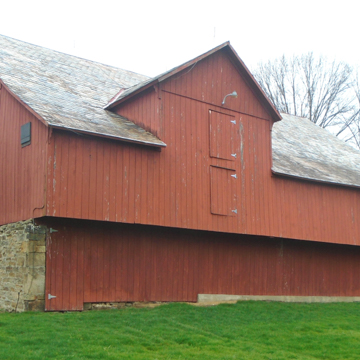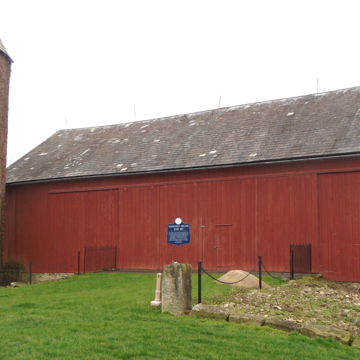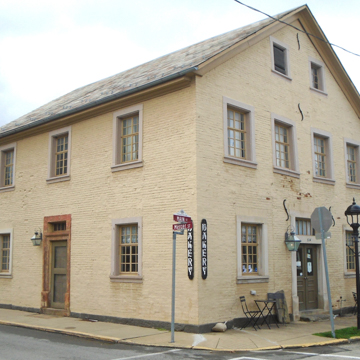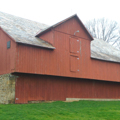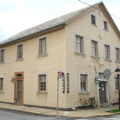The Harmony Museum displays furniture and artifacts from Harmonist history and, as an artifact itself, embodies that history. Built as a warehouse and granary, much of the building remains as the Harmonists left it, including the recessed Virgin Sophia (symbol of chaste and holy wisdom) doorway attributed to Frederick Reichert Rapp. The original windows had stone surrounds, which are gone, but
You are here
Harmony Museum
1809. 218 Mercer St.
If SAH Archipedia has been useful to you, please consider supporting it.
SAH Archipedia tells the story of the United States through its buildings, landscapes, and cities. This freely available resource empowers the public with authoritative knowledge that deepens their understanding and appreciation of the built environment. But the Society of Architectural Historians, which created SAH Archipedia with University of Virginia Press, needs your support to maintain the high-caliber research, writing, photography, cartography, editing, design, and programming that make SAH Archipedia a trusted online resource available to all who value the history of place, heritage tourism, and learning.


